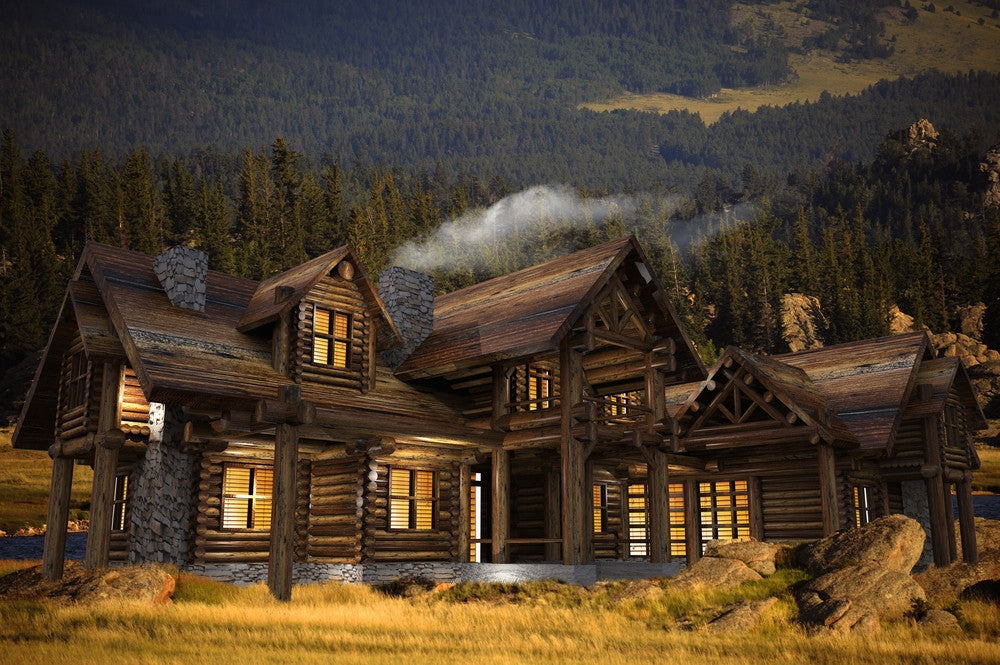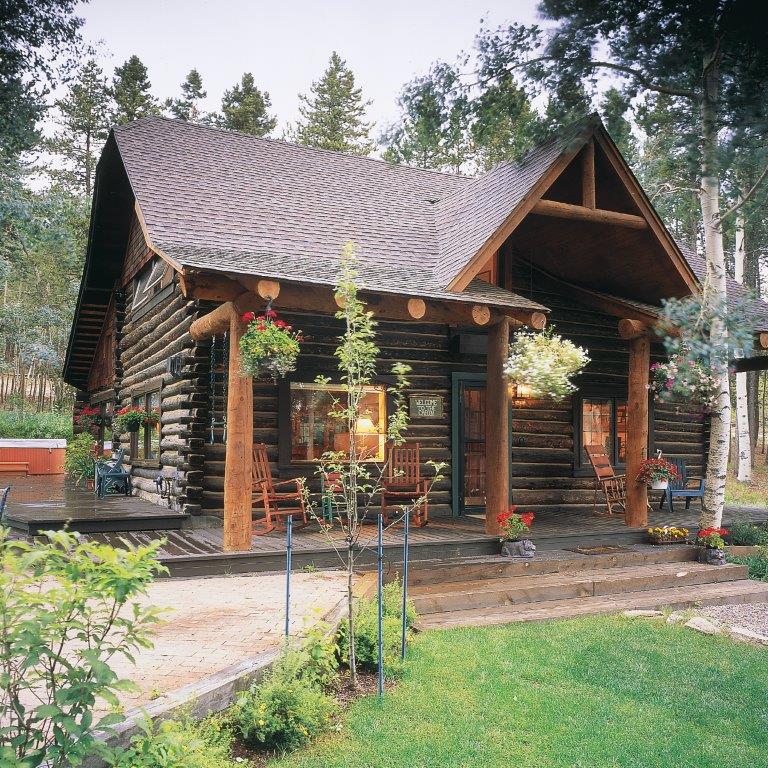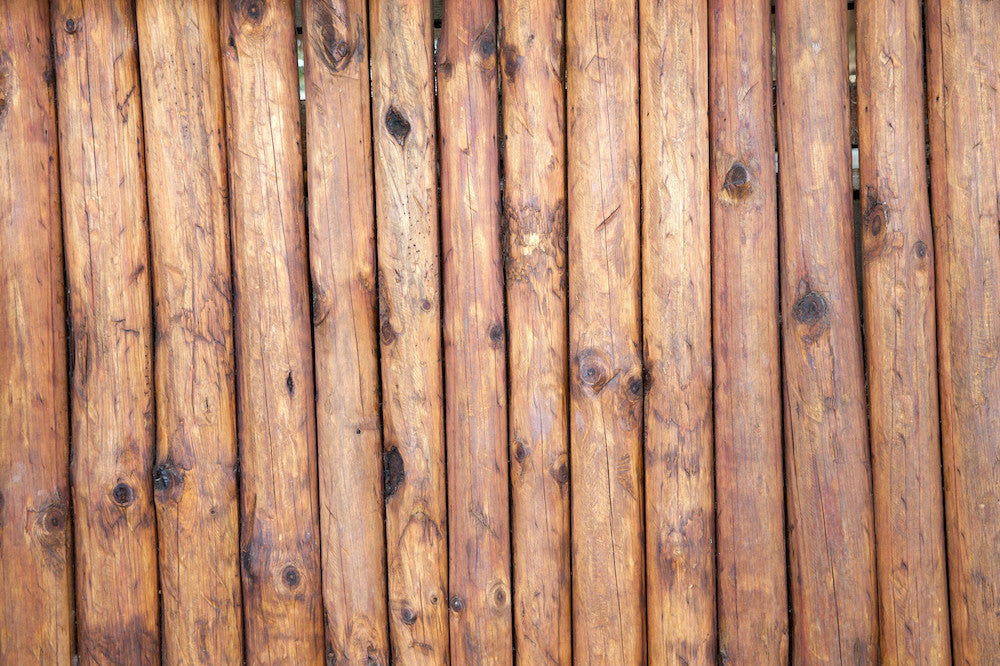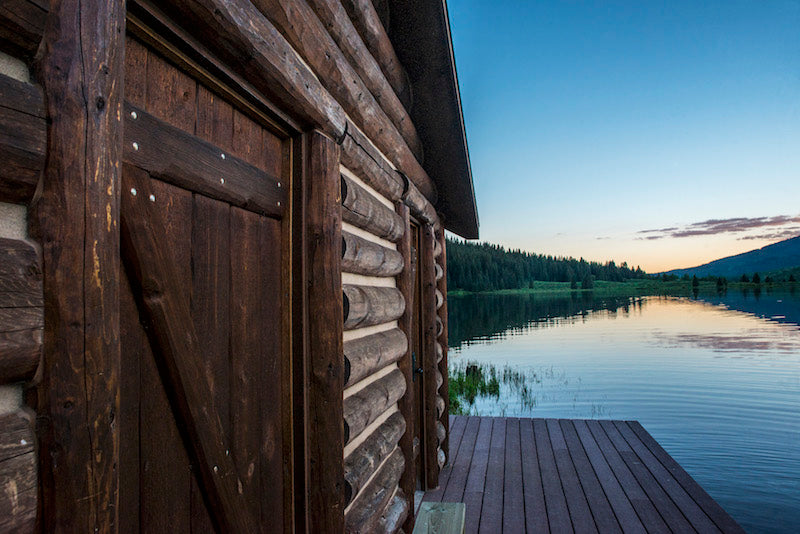The 5 Ways Log Homes Stand Up To Hurricanes, Tornadoes, And The Tests Of Time

Just hearing the words “log home” might take you back to pioneer days – picturing wood stoves, root cellars, housewives cooking while their husbands are out hunting dinner – but today’s log homes are a far cry from the more primitive, old-fashioned log cabins of yesteryear. In fact, evidence is mounting that log homes are actually more durable than their contemporary, wood-and-drywall crafted counterparts – log homes are actually more likely to survive natural disasters, given the rock-solid building techniques used during construction, and several design quirks. Let’s take a look at 5 of the ways that log homes are better able to stand up to natural disasters, and usually last longer than traditionally constructed homes.
The Walls of Log Homes Are Stronger Than Traditionally Constructed Homes
Think of the wall of a traditionally made home – it’s nothing but supporting beams, insulation, and a thin layer of drywall on the inside, with shingles or other siding on the outside to protect the whole structure from the elements. These walls are mostly hollow, and while they’re plenty strong in normal conditions, they become much weaker when wind or other conditions cause shearing or horizontal pressure. Contrast this to a wall made of logs. The logs used in modern homes are of exceptional quality – they’re dense, strong, and totally solid, and these massive walls are what provide a lot of the strength that log homes are known for. In fact, there was a recorded incident where a log home was ripped off of its foundation by flooding – only to be discovered floating intact on the floodwaters, a great example of log home strength.
Log Walls Are Fire Resistant
Natural calamities like hurricanes can cause flooding and fire, due to the effects the wind and water have on power systems and other dangerous utilities, and tornado-carrying supercells have with them, the ever-present threat of lightning strikes. Wildfires can also be an issue to take into consideration if you live in the west – but no matter the cause, log homes can stand up to fires – better than a traditional home. This is because the large size and density of the logs used in a log home preclude their use as a fuel source during house fires – they’re generally too heavy and dense to catch fire at house-fire temperatures. This is in contrast to other materials like drywall, which have autoignition temperatures as low as 500 degrees Fahrenheit.
No Roof? No Problem!
The structural integrity of a traditionally-built home is totally dependent on the entire structure remaining standing – usually, the walls are not strong enough to stand on their own. Because of this, if the roof fails or is blown off by high winds – very typical in tornadoes and hurricanes – the entire structure fails catastrophically, leading to a loss of home, or a loss of life. Roof loss is the most common manner in which a home fails during heavy winds, whether from a tornado or a hurricane. This is not a problem with a well-built log home. Log homes have very sturdy walls, and the heavy-duty logs used in construction are capable of standing on their own, even without a roof. Log homes can lose windows, doors, and roofs with little risk of the superstructure collapsing, and further reinforcement of these at-risk areas is possible due to the heavy-duty construction techniques used while building log homes, such as hurricane straps to secure a roof to the durable and strong walls of your home.
Log Homes Allow For Easy Flood Recovery
When you think about the multilayered construction of traditional homes, it becomes clear that recovering from a flood can be nigh-impossible – insulation, wall cavities, and sheetrock can become soaked and trap moisture, causing problems even long-after the water has been evacuated. Log homes avoid these issues – log walls are solid, and present no tiny gaps where water can sit and continue to cause problems within the structure. While log homes are not any better at preventing flooding, it is much easier to recover and resume normalcy, due to the lack of permanent damage or moisture lock-in. Log home maintenance after a flood is quick and easy, with none of the problems associated with traditional homes.
Log Homes Resist Earthquakes
Much for the same reasons that they’re better at holding up to wind and flooding, log homes are much better at holding up to earthquakes. Each individual wall can hold up its own weight, as well as the weight of the roof, so it’s unlikely for the walls of a log home to fail except during immensely powerful earthquakes. There are reports that a log home 1000 yards from the epicenter of a 5.7 Richter scale earthquake – that suffered no damage.
Wrap-up
While log homes are by no means indestructible, they offer many advantages in their construction that traditional homes don’t, and they’re much better at holding up to the elements, and safer in many natural disaster situations. Combined with their rustic appeal, it’s no wonder these homes are growing in popularity.





